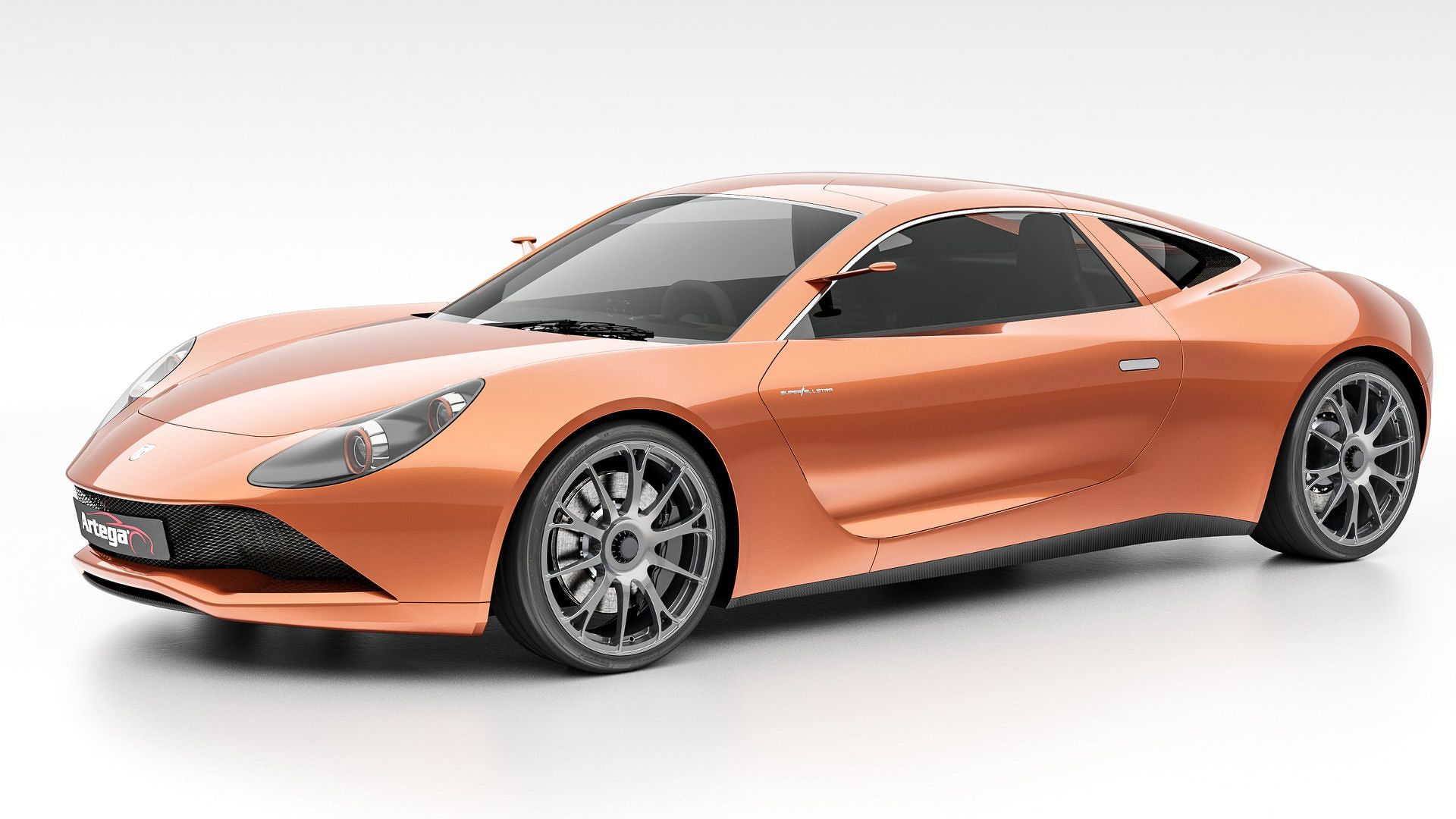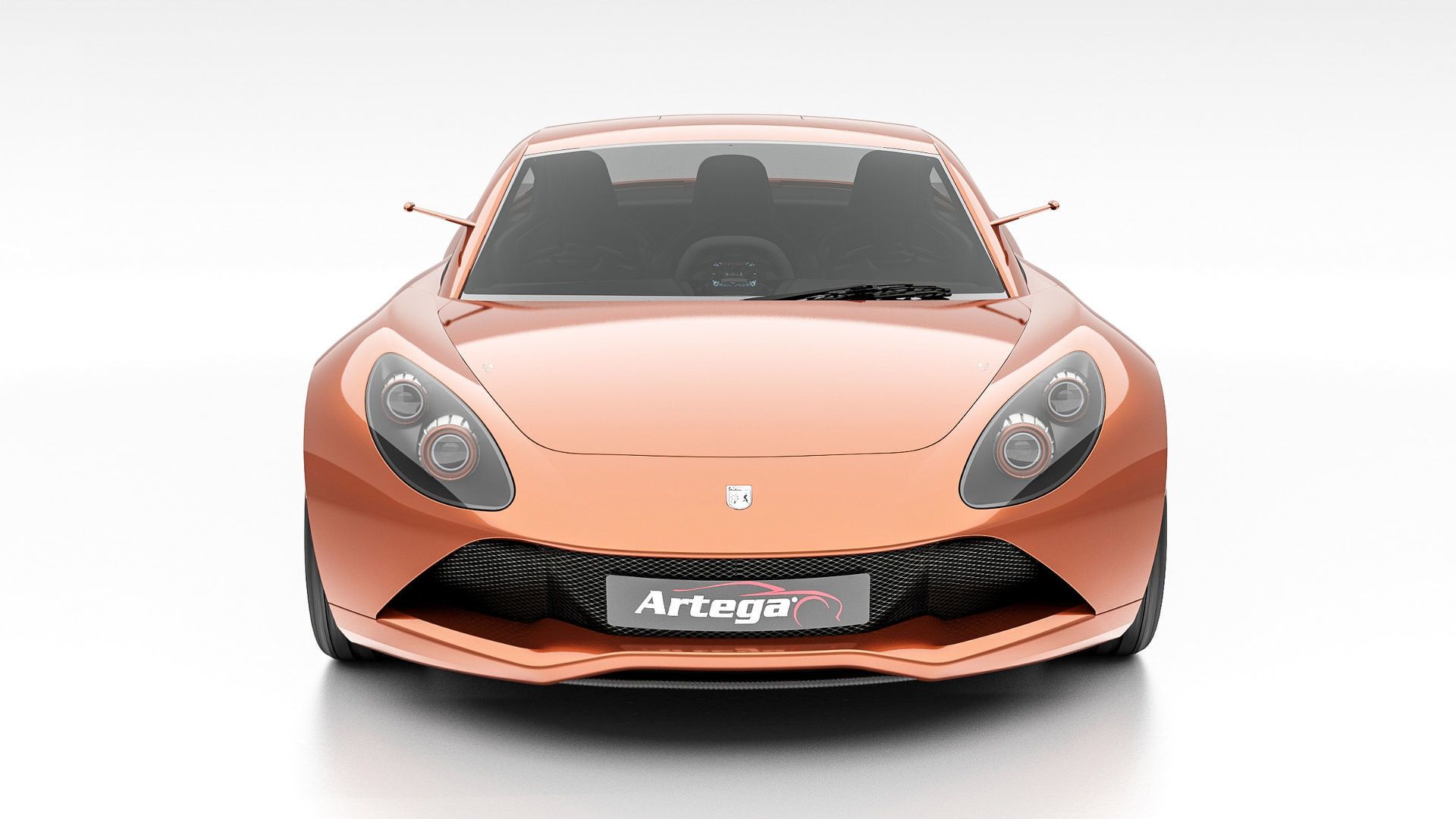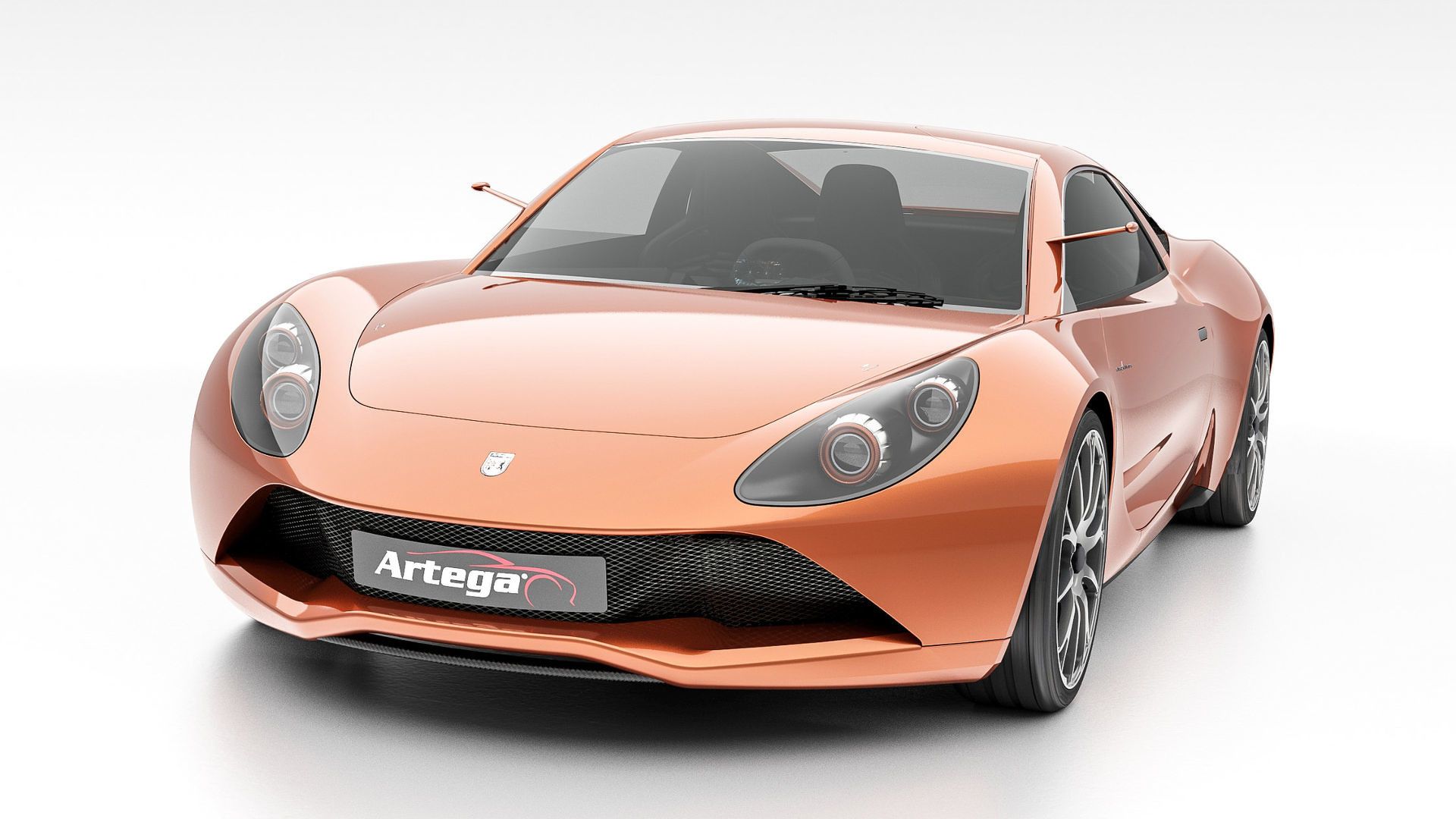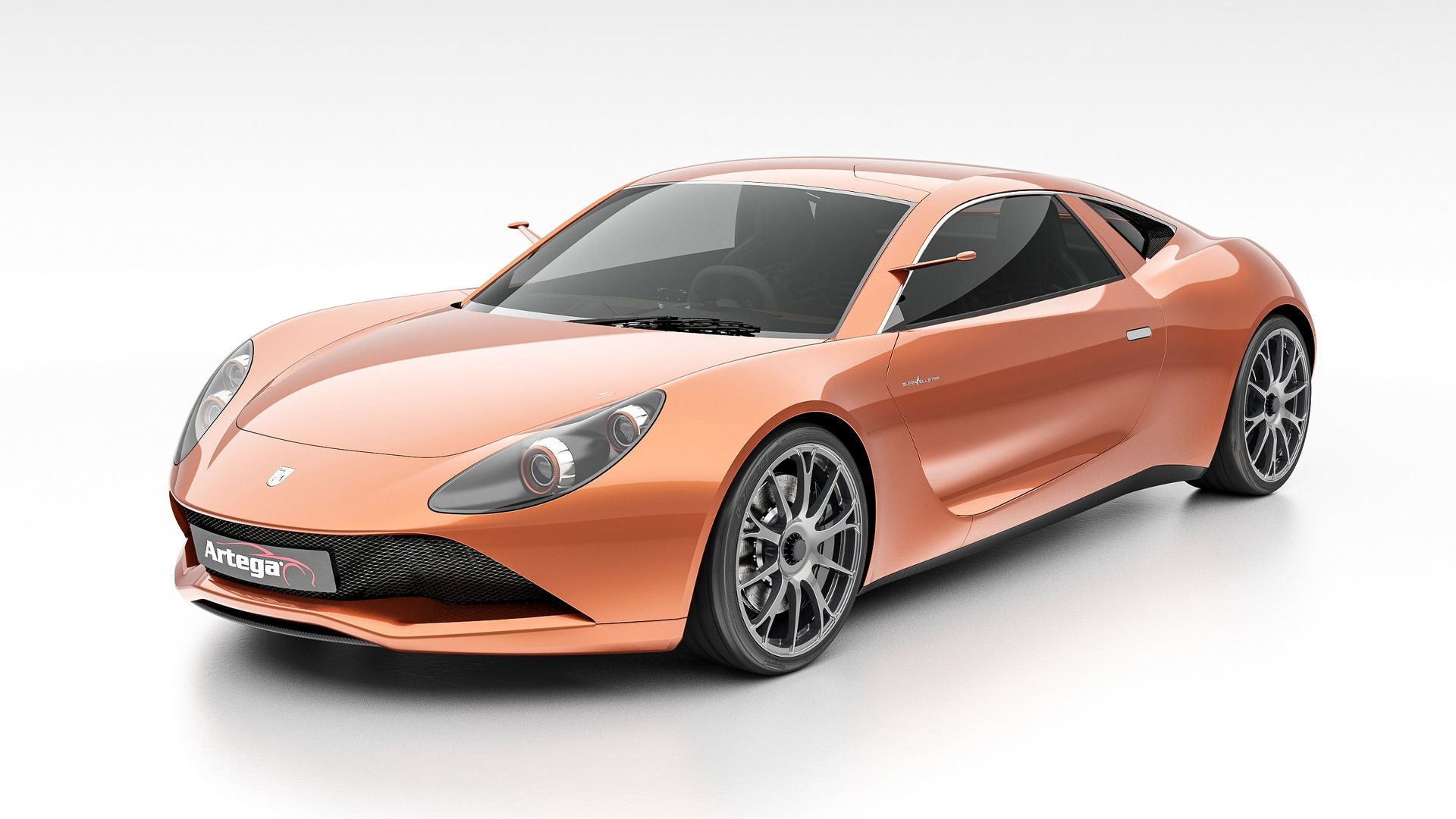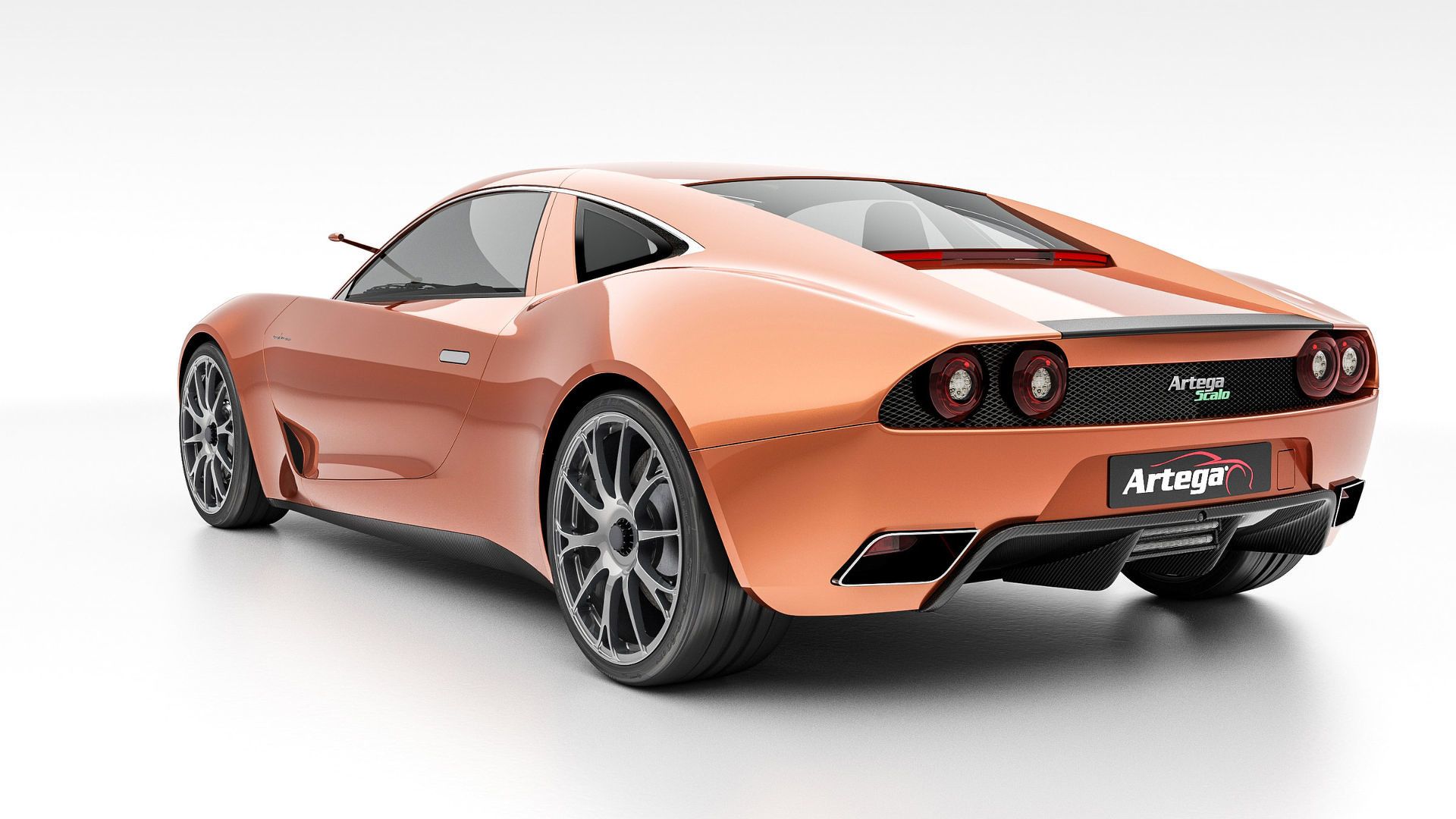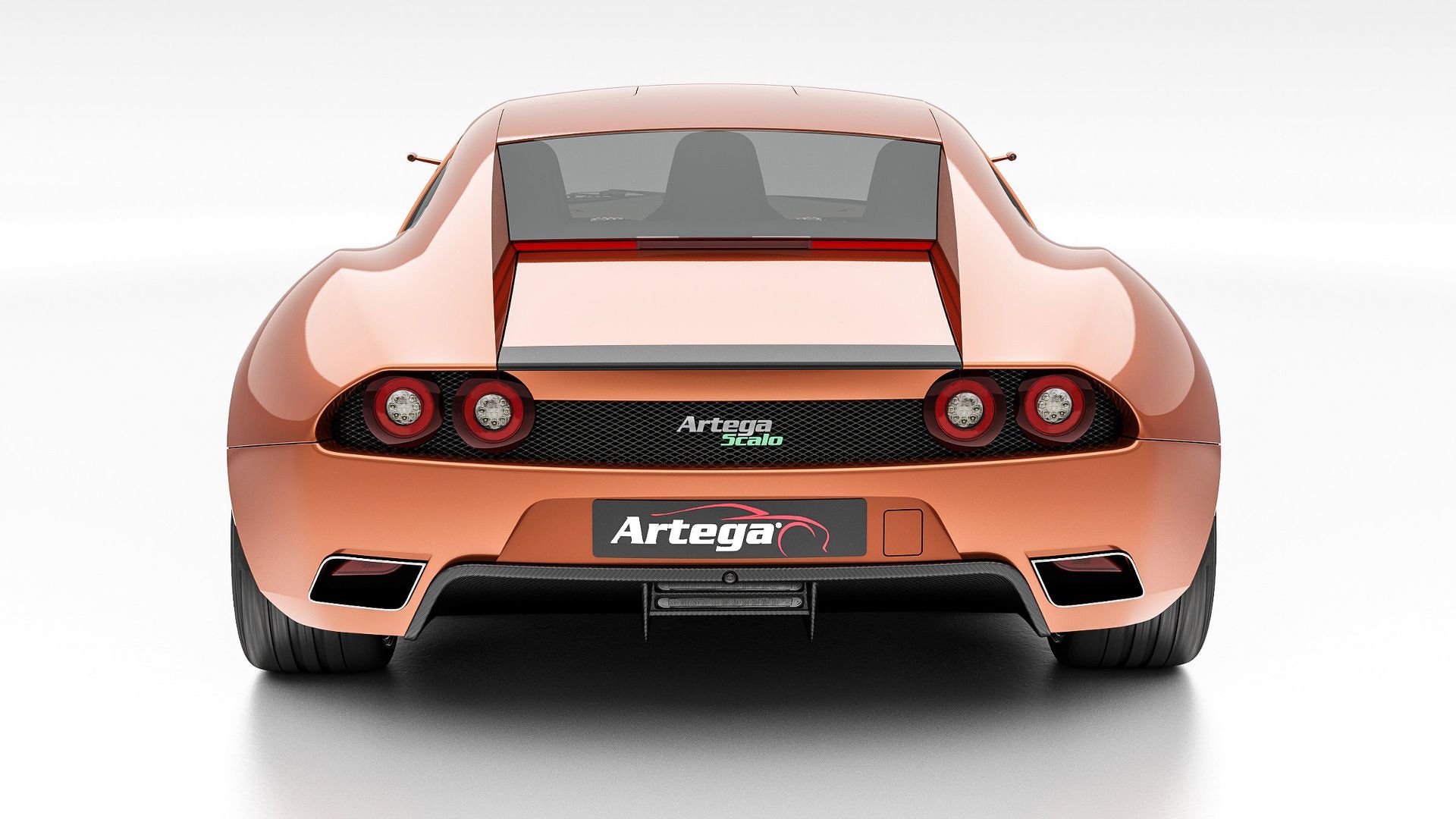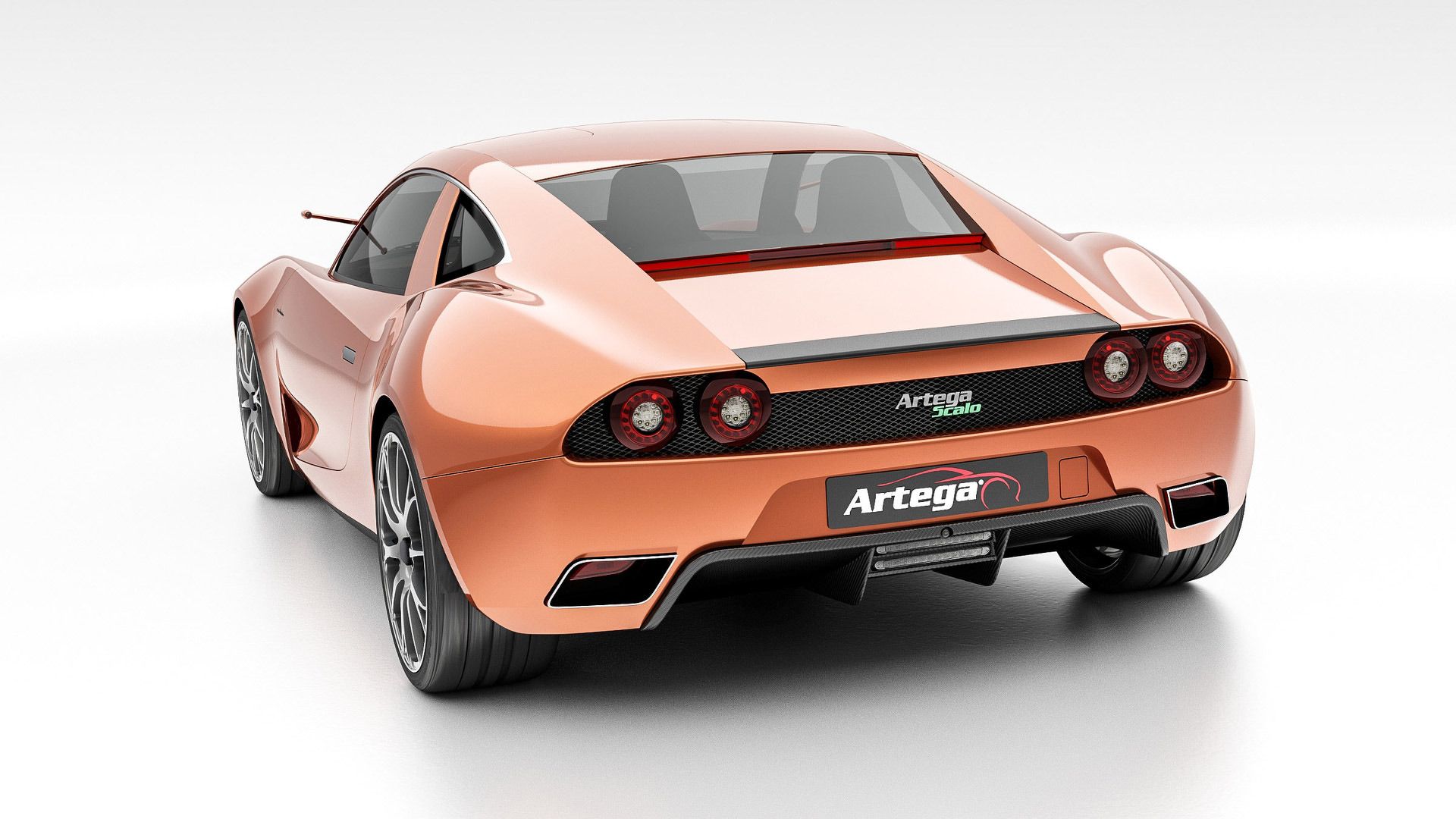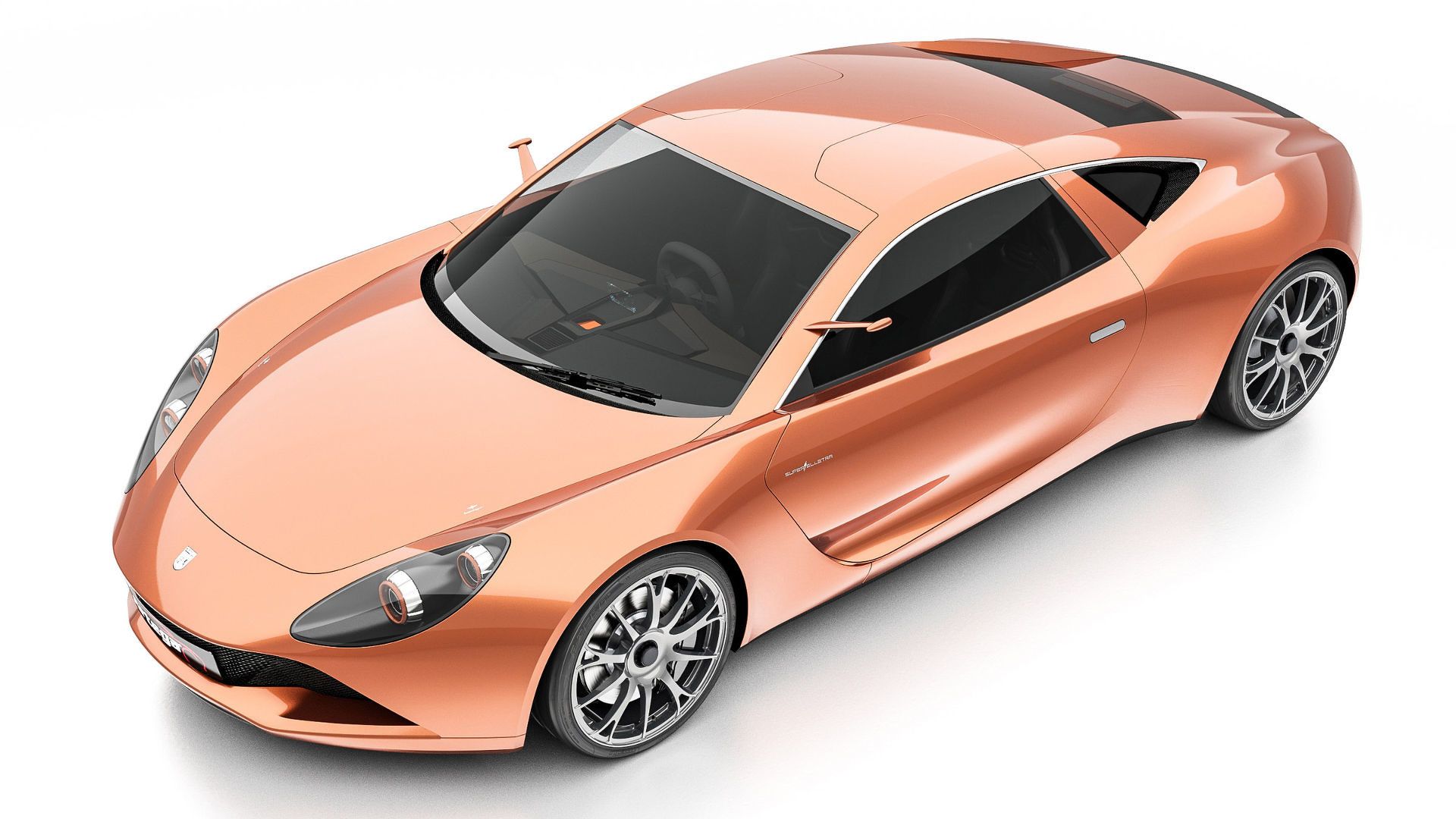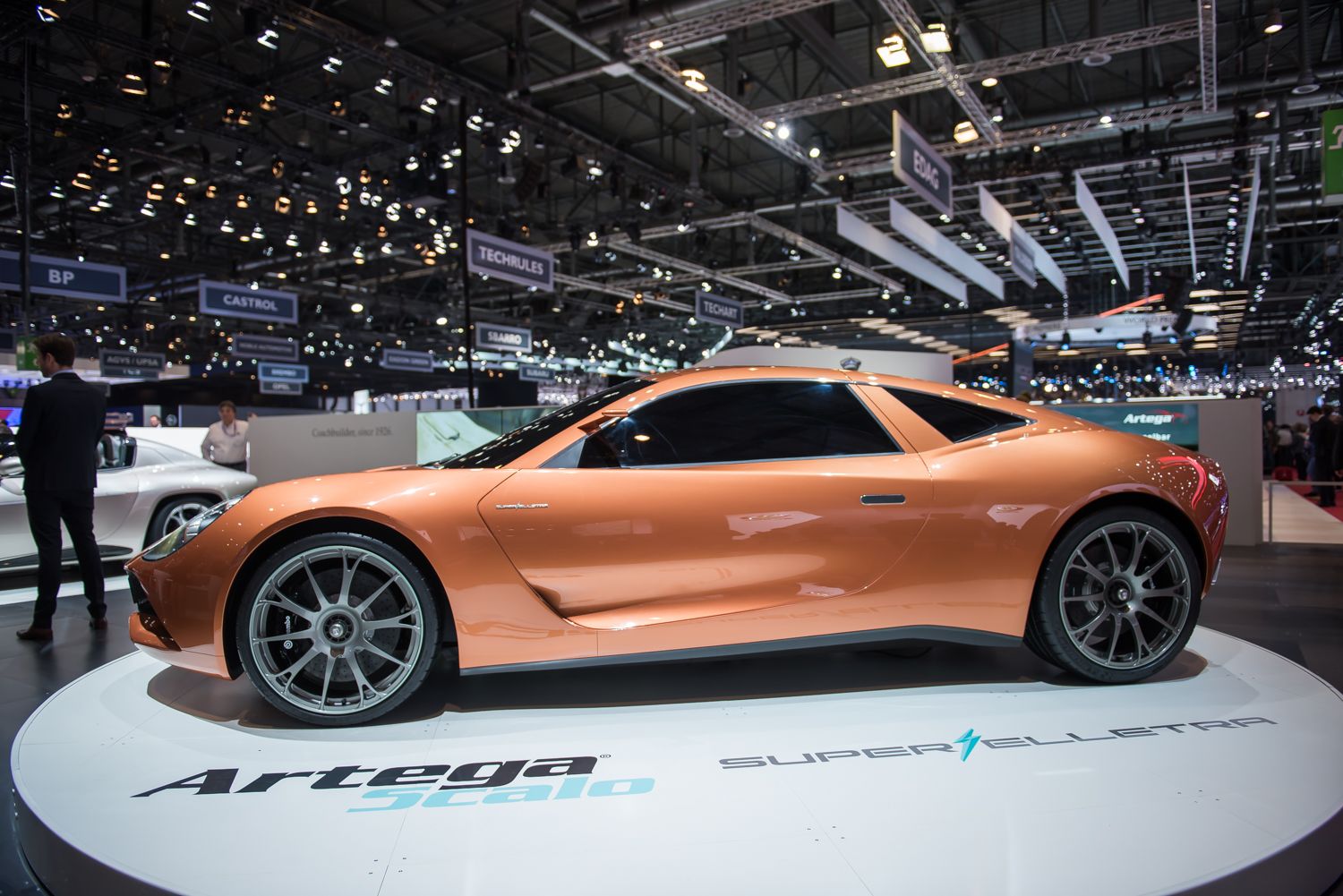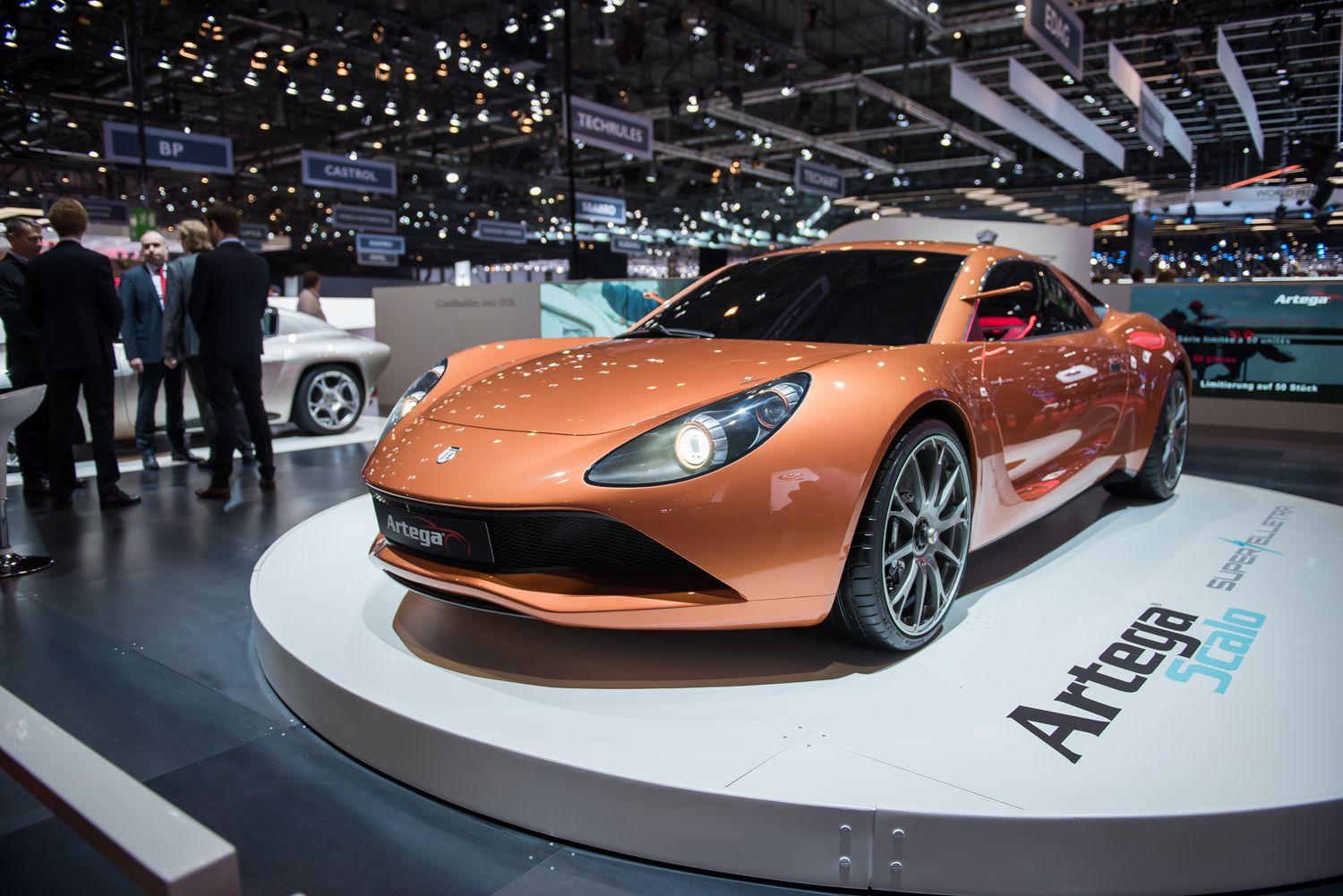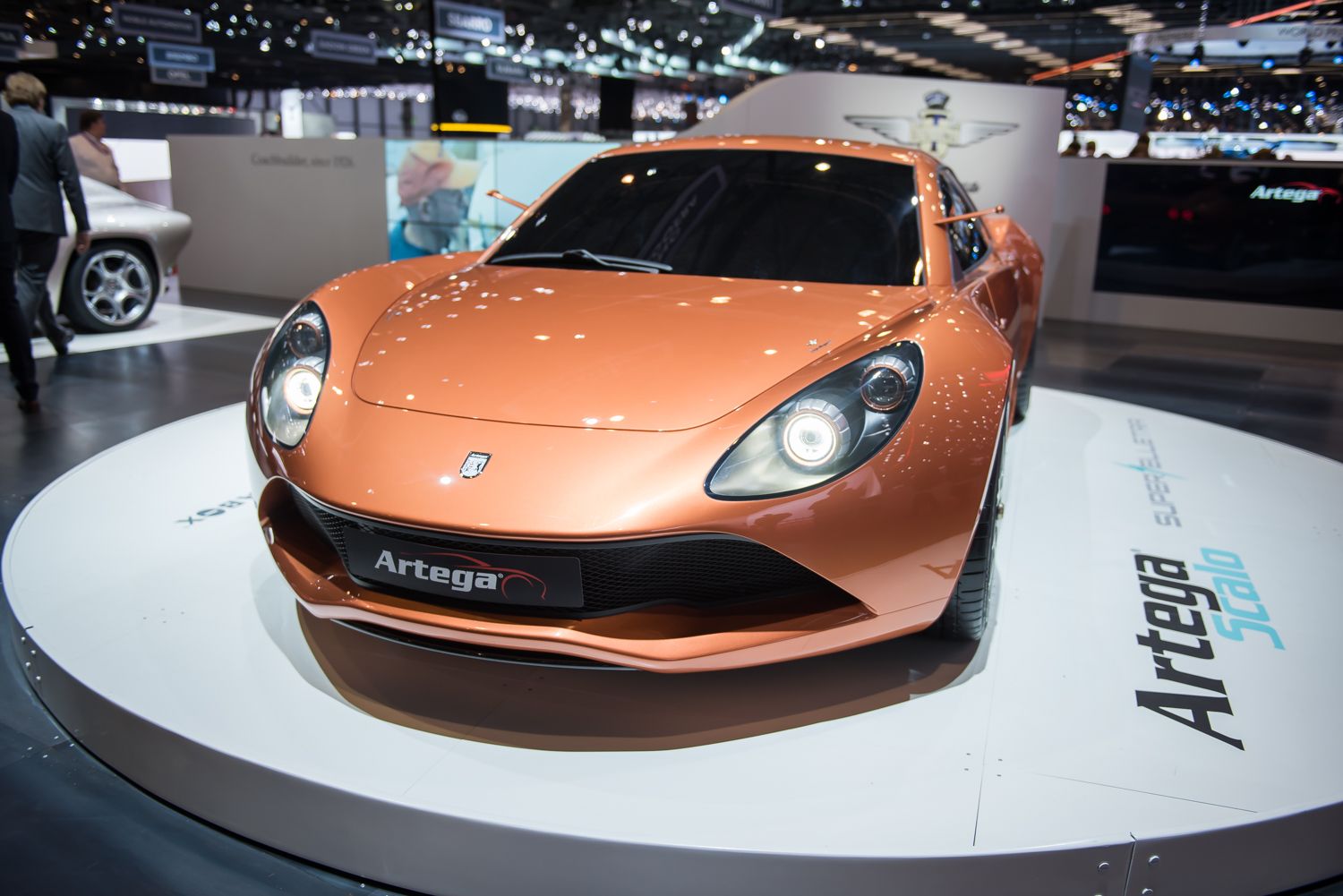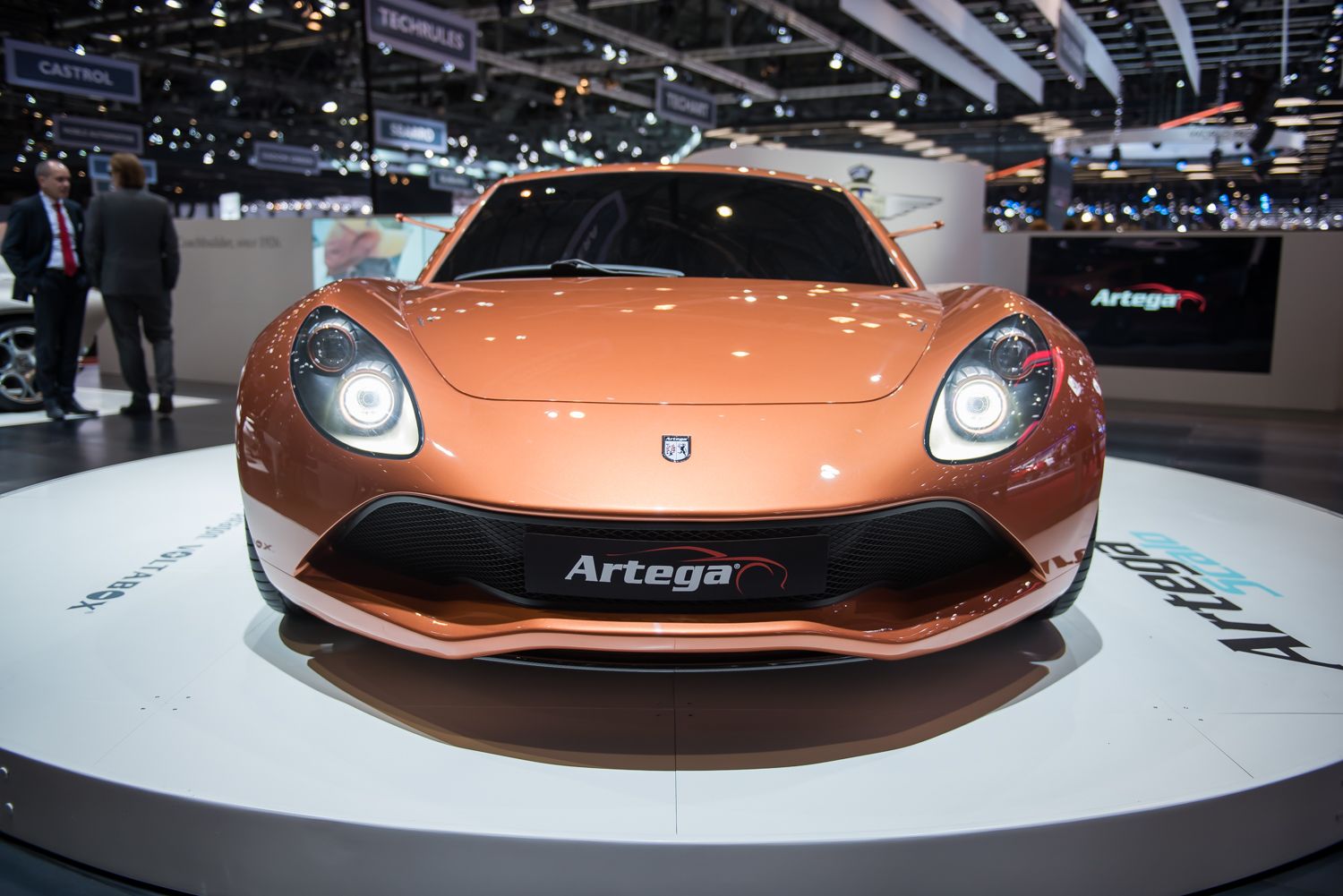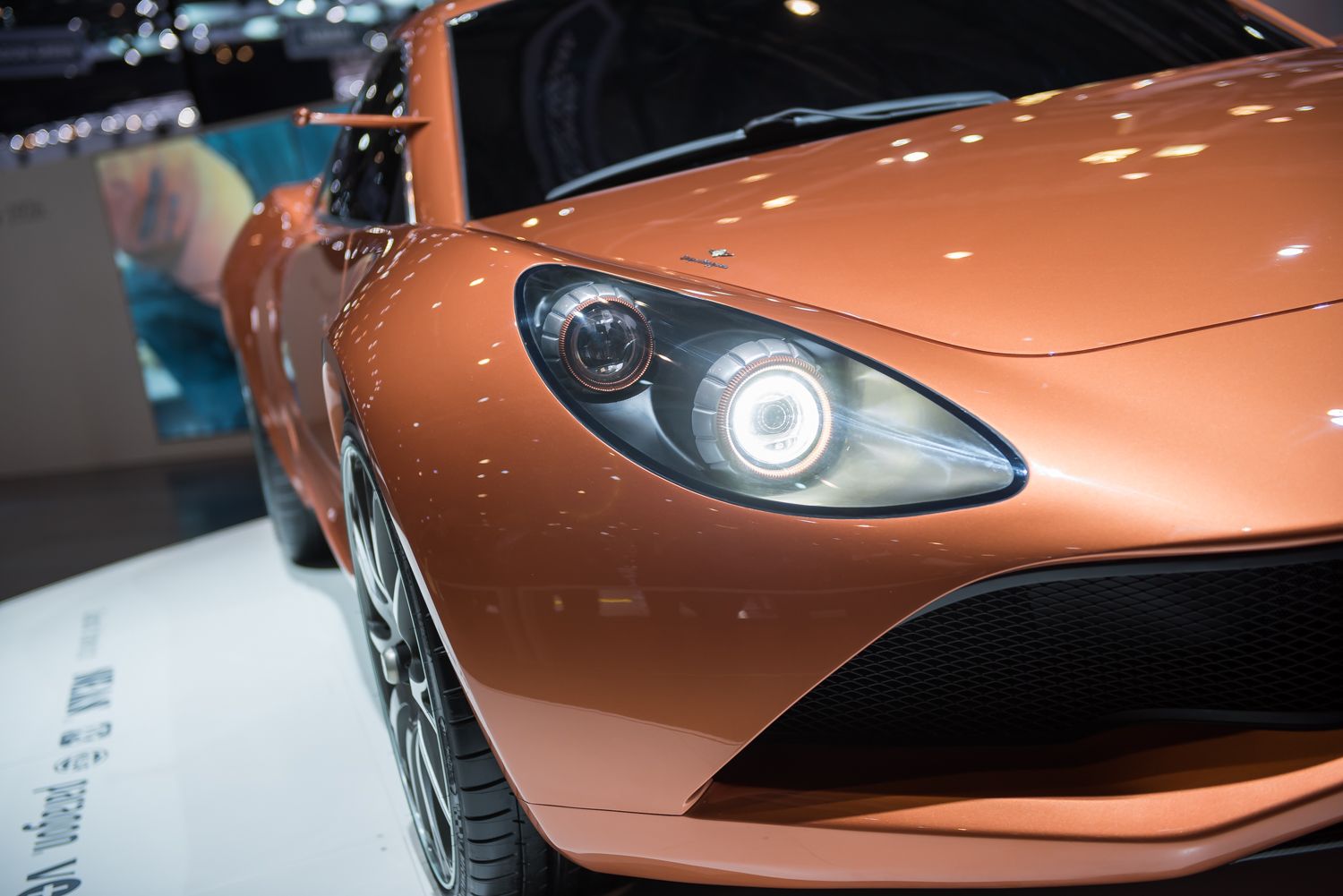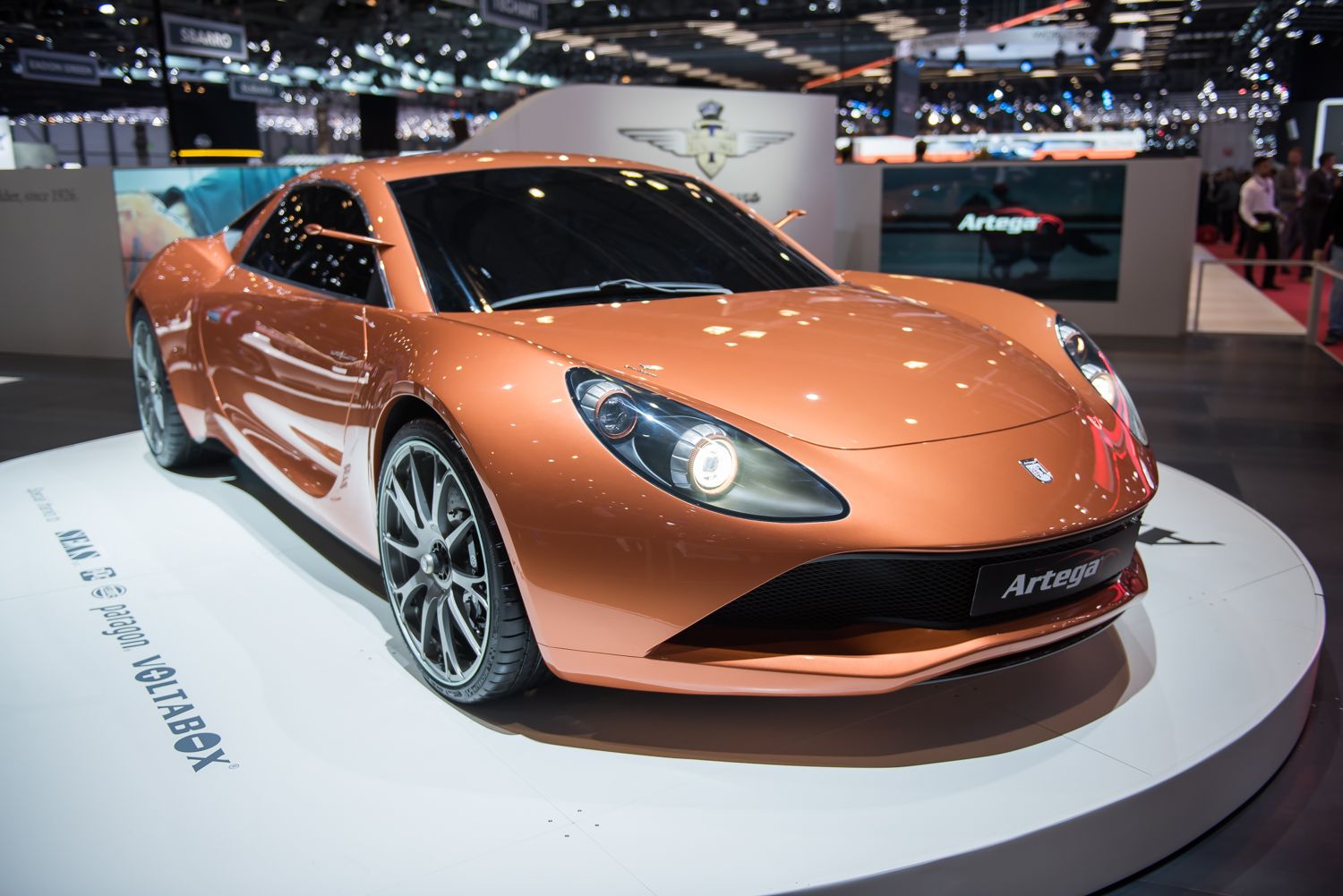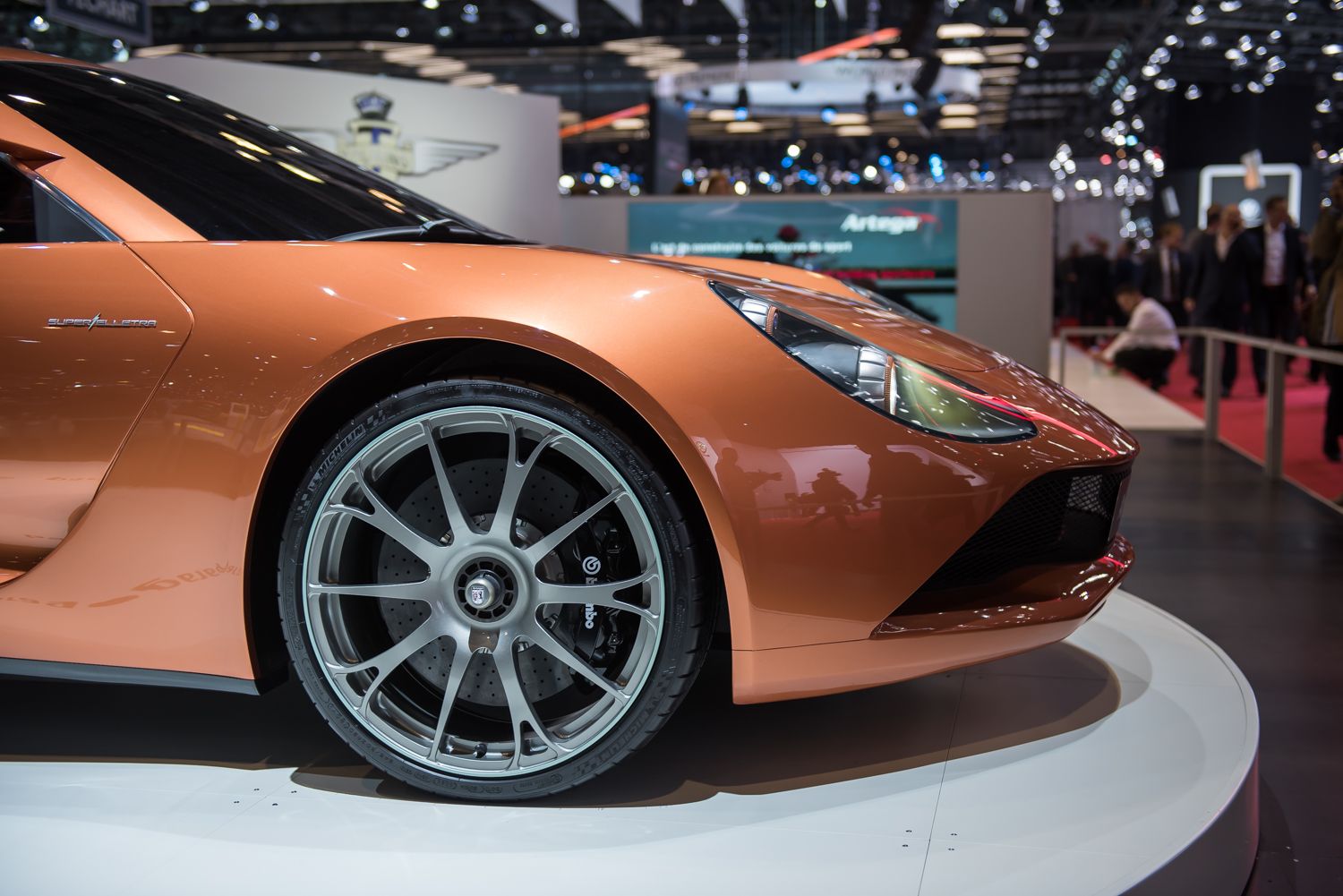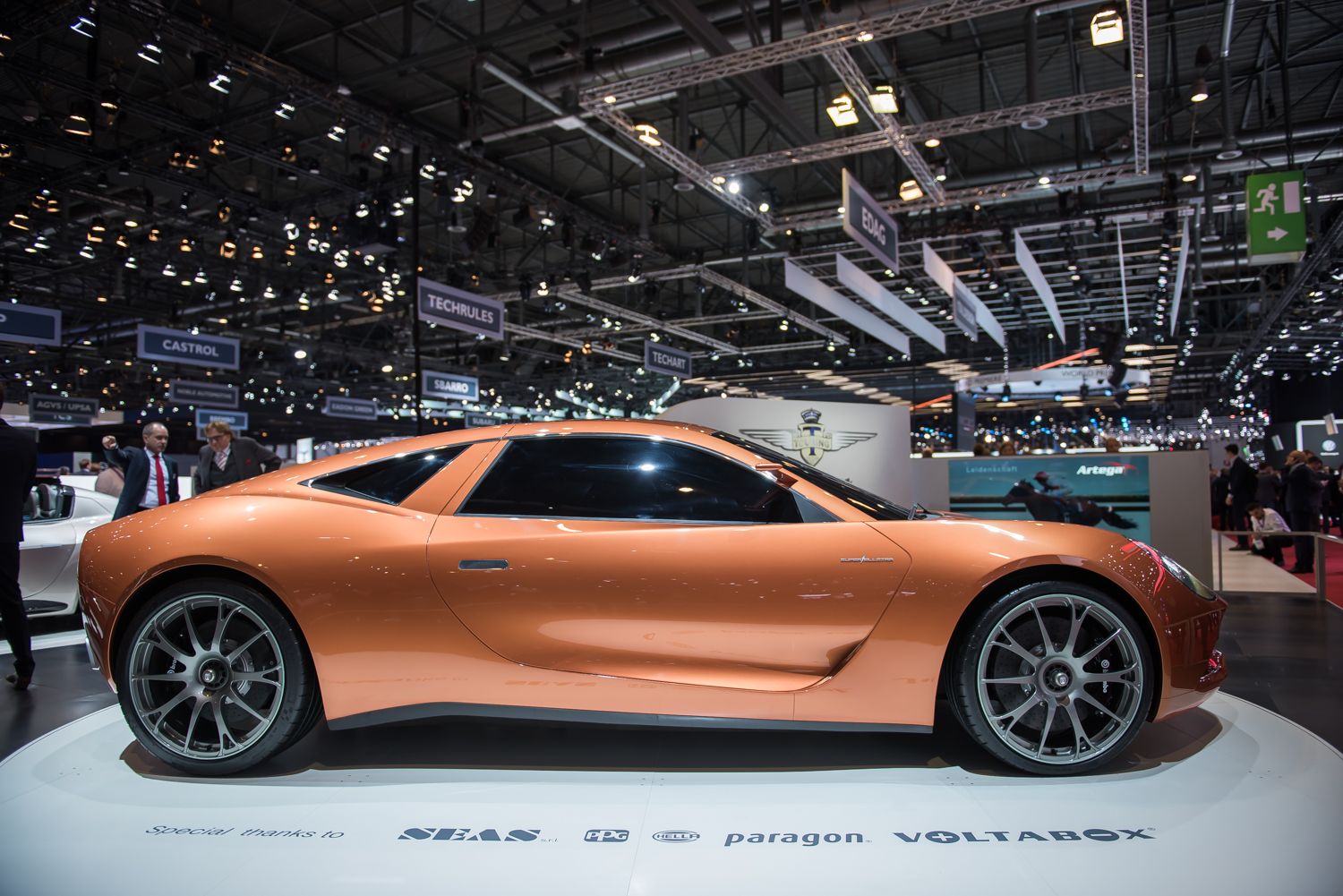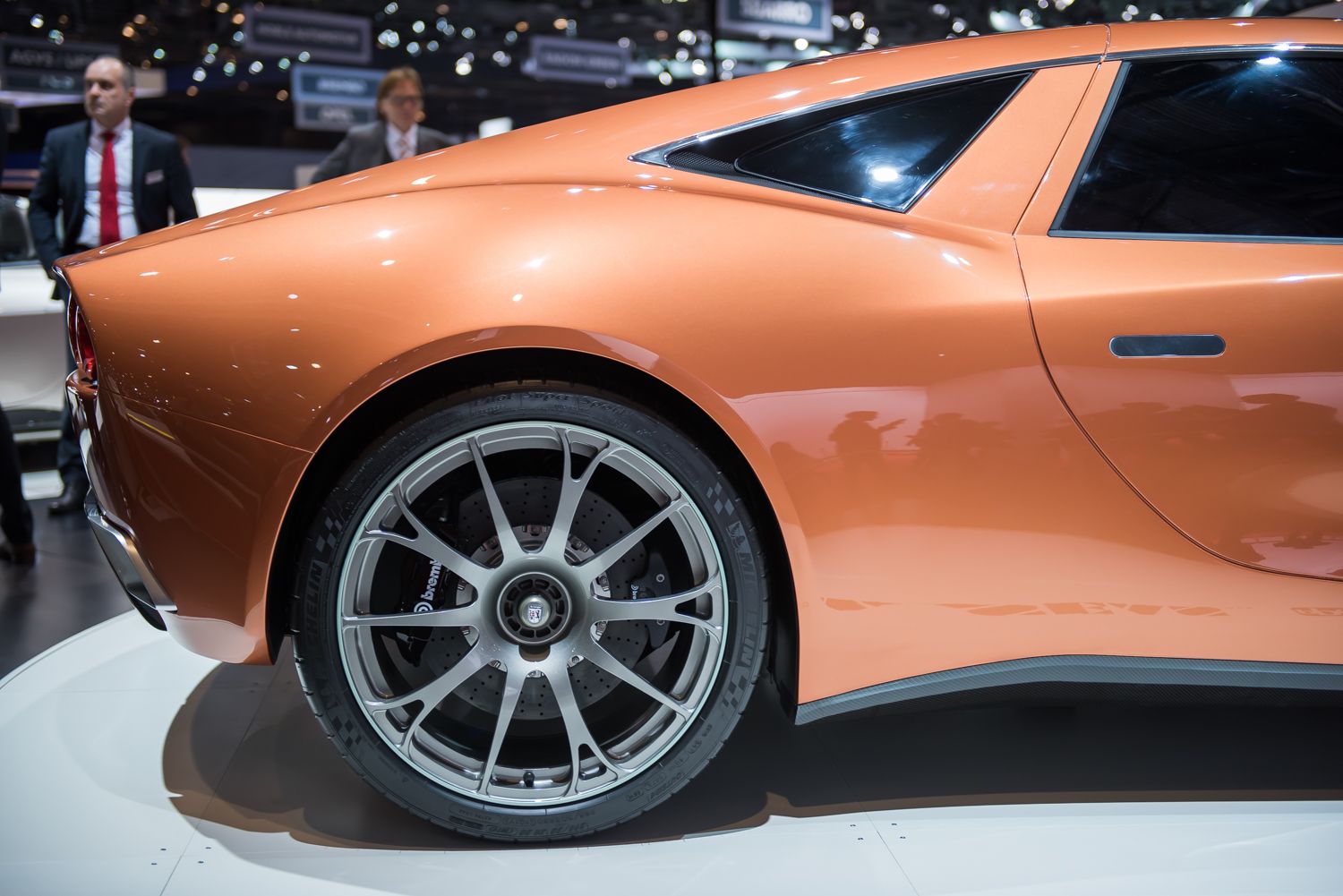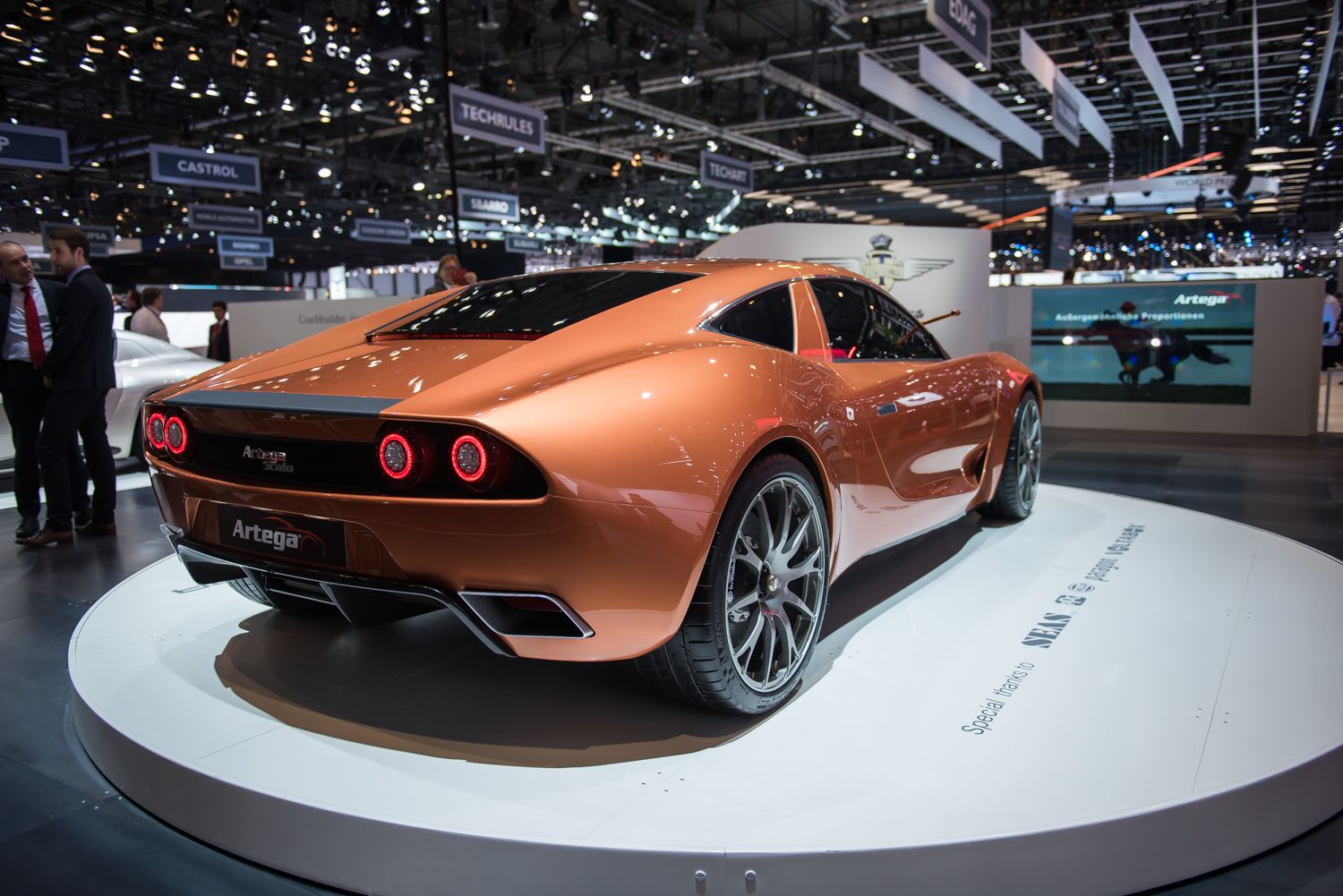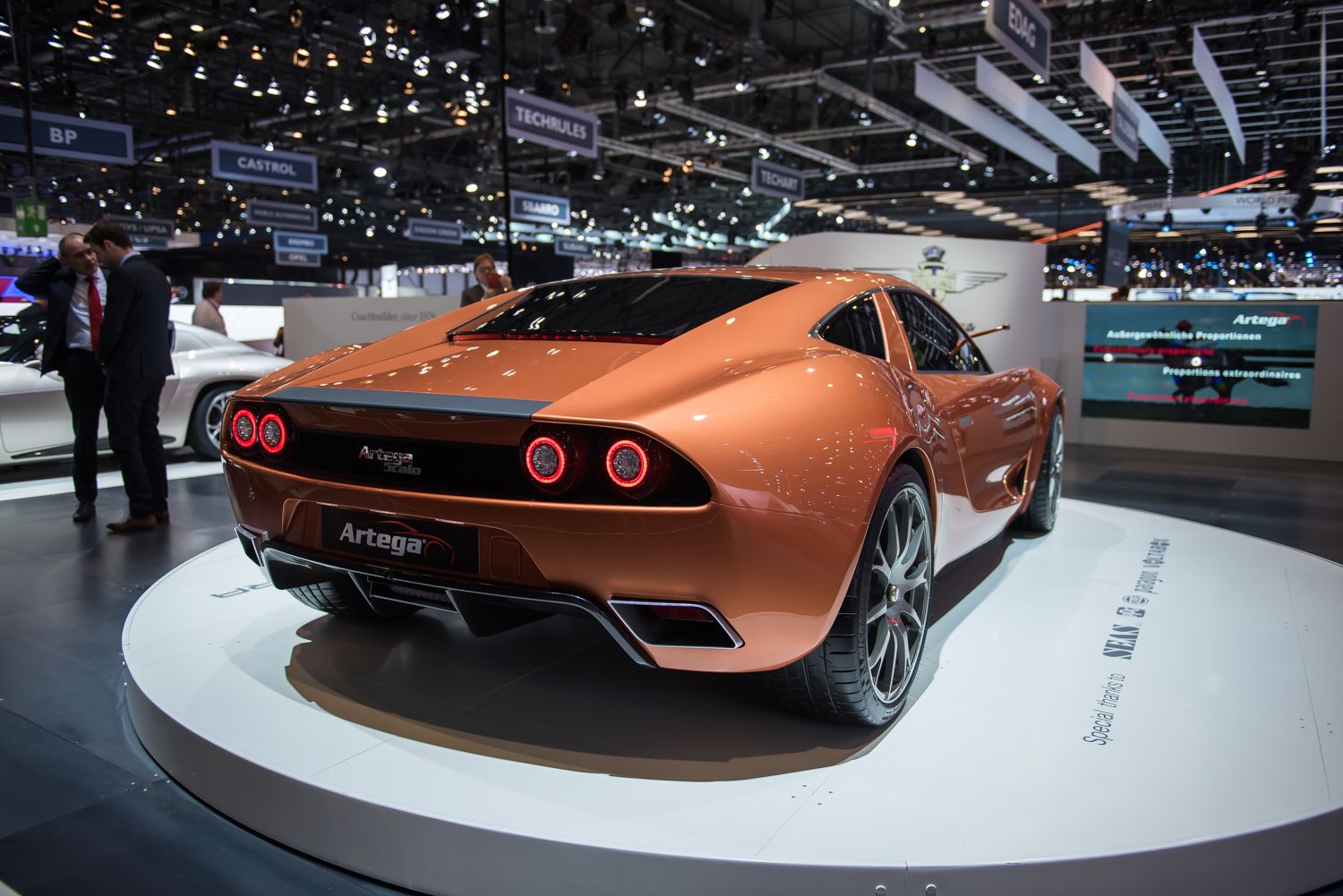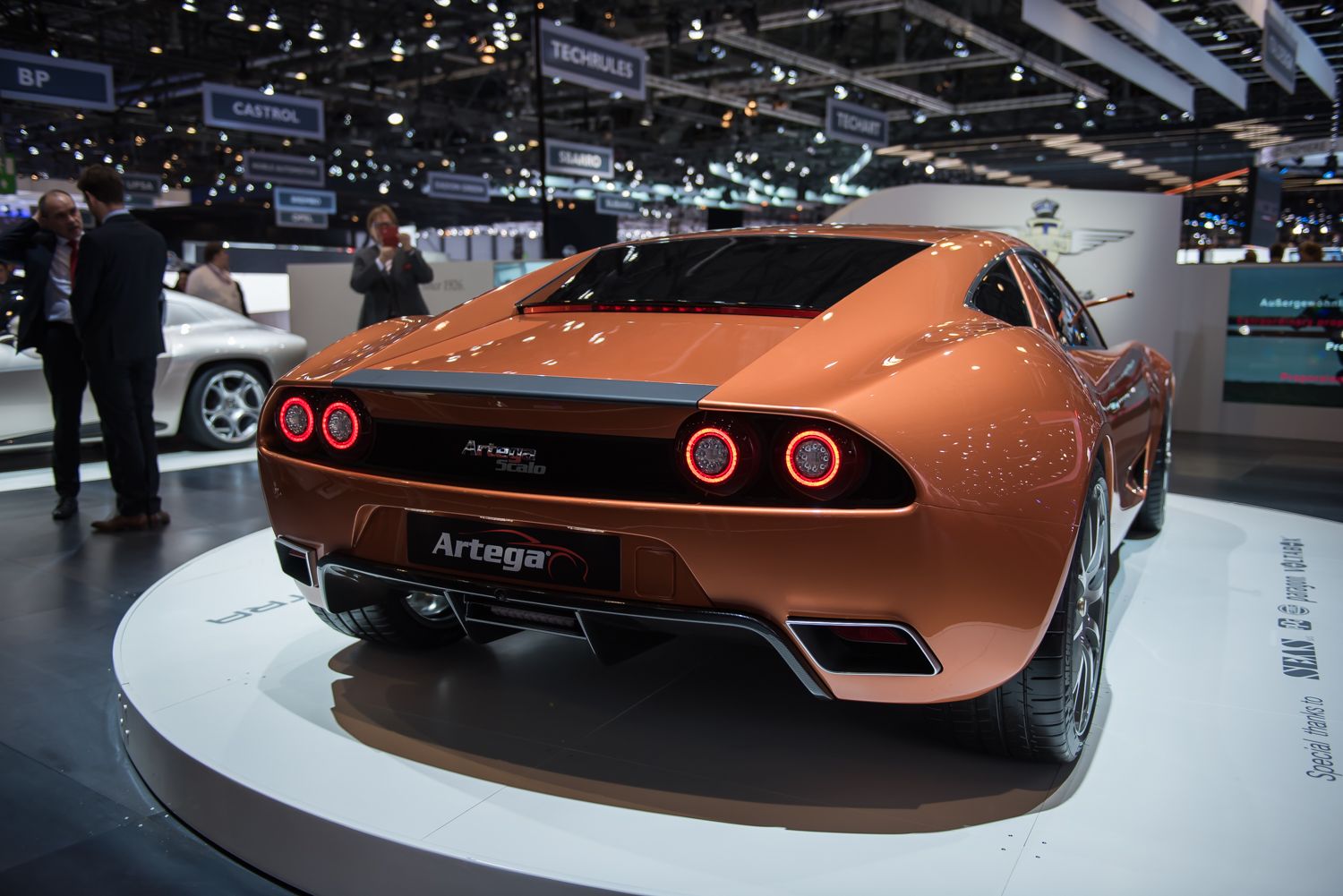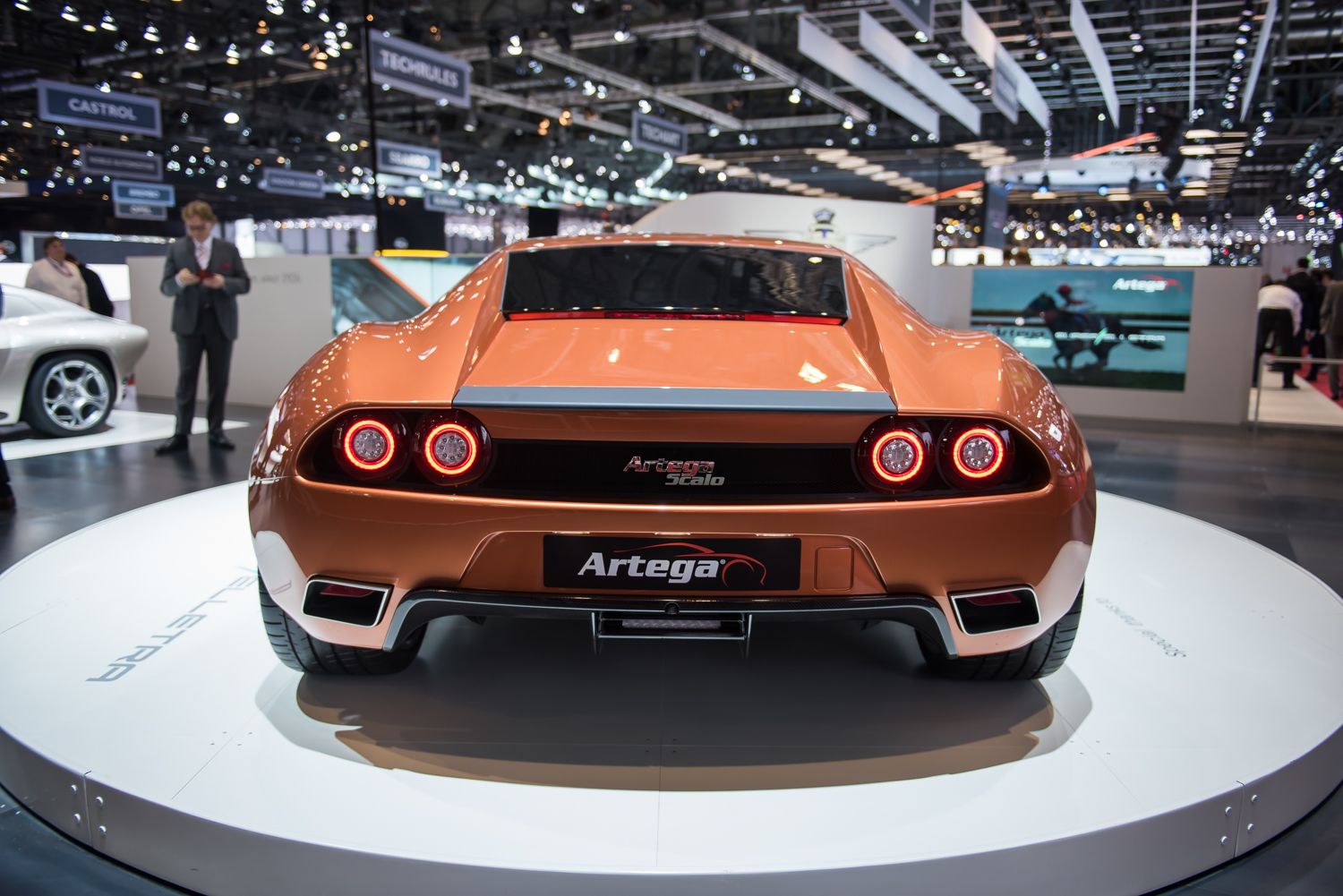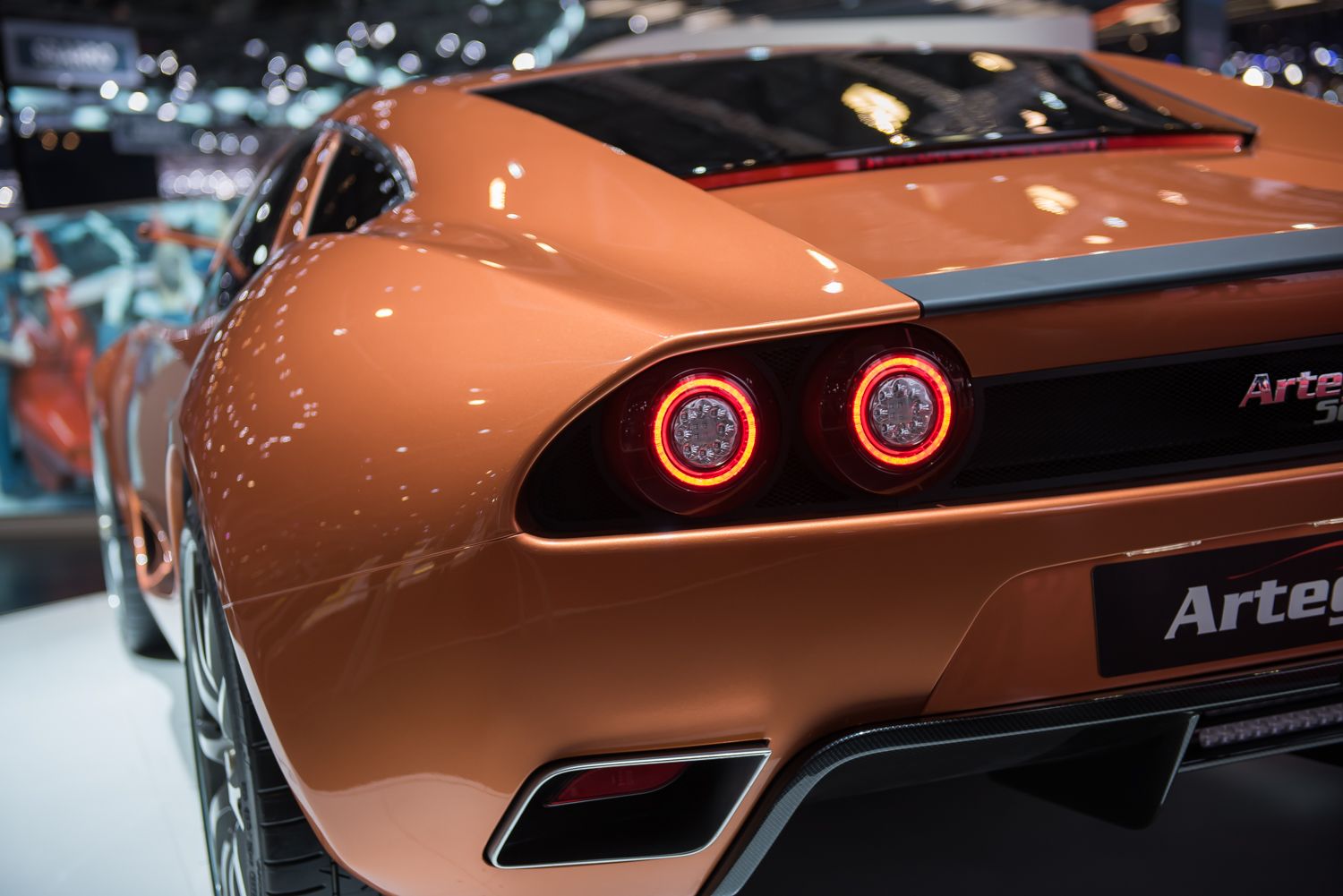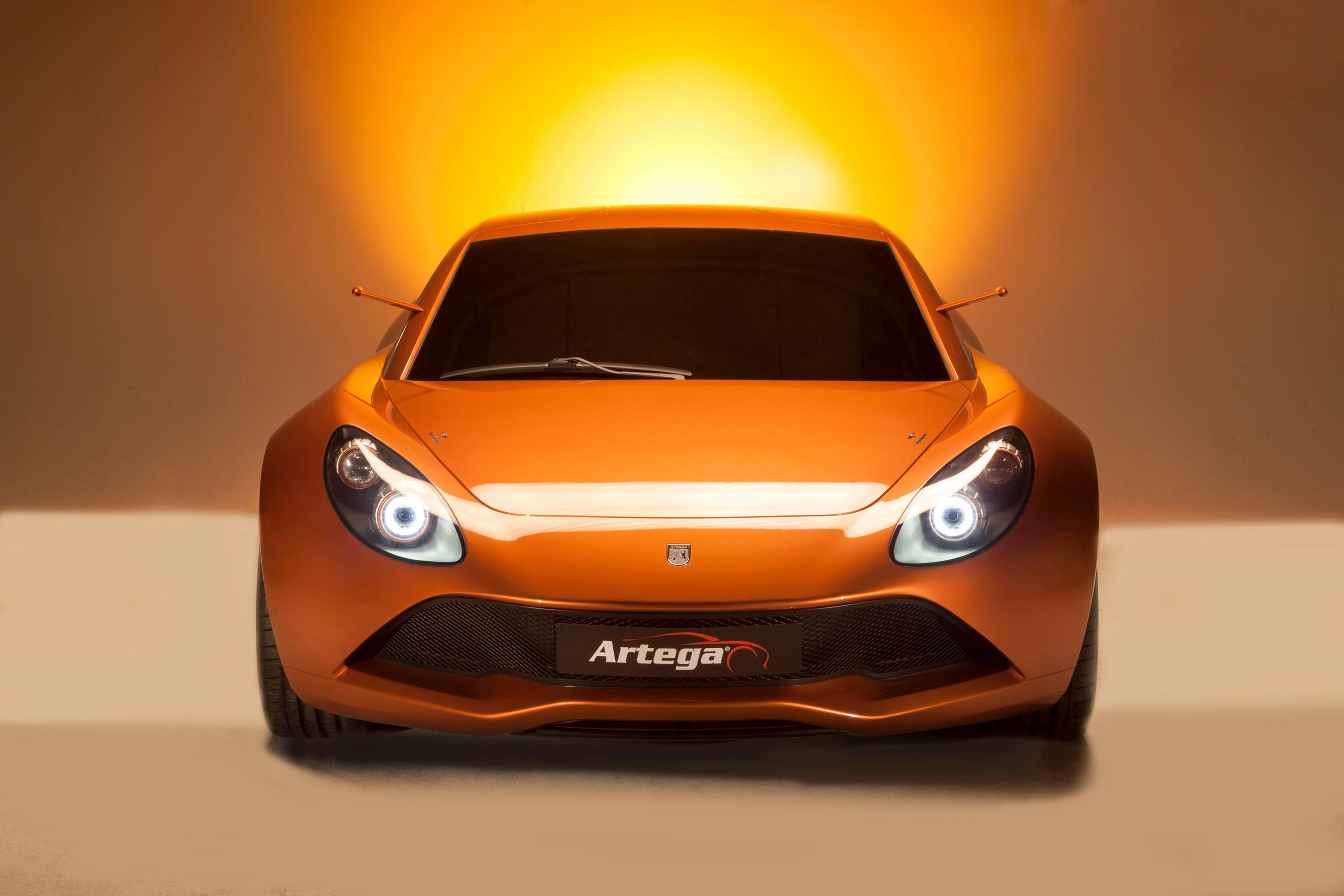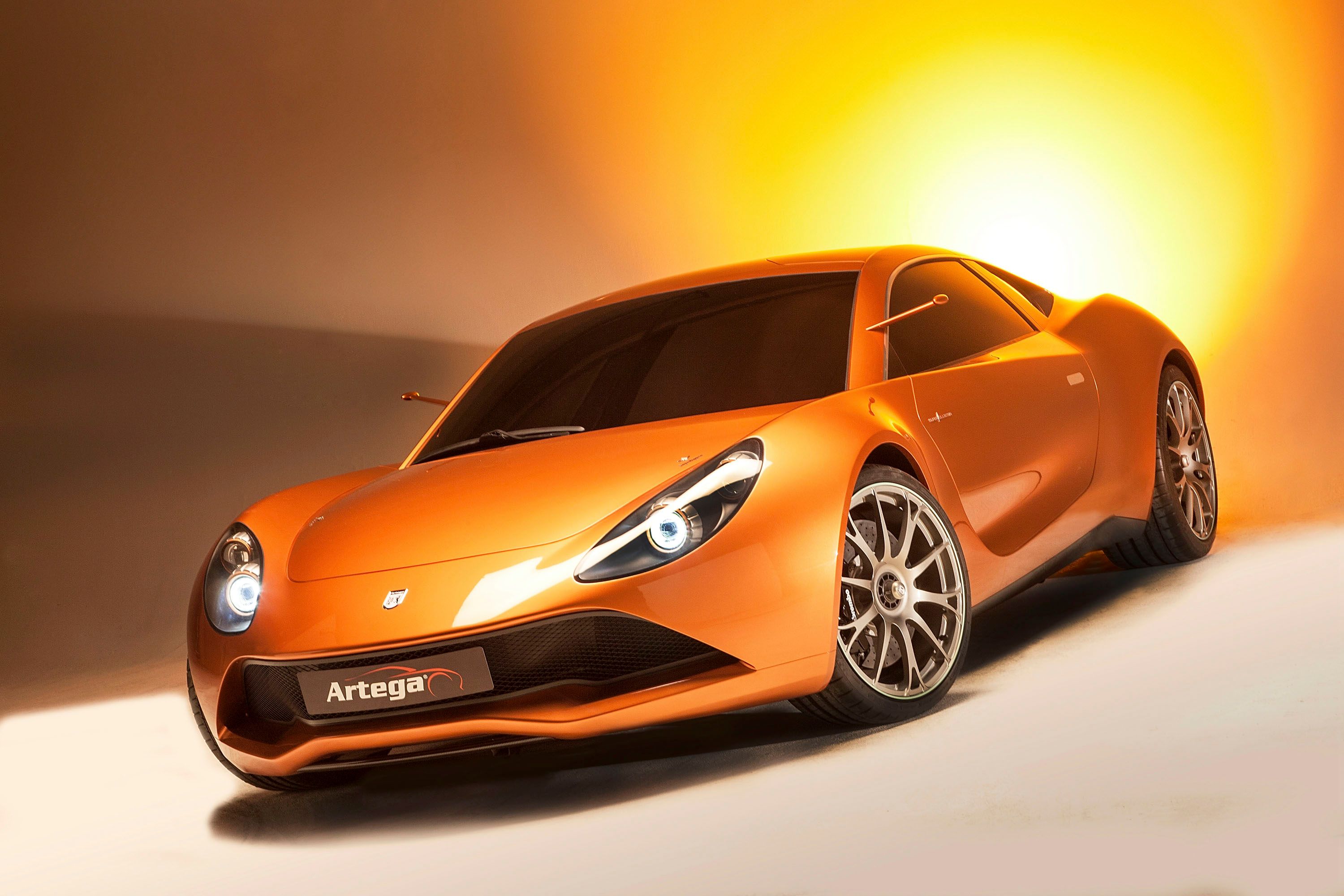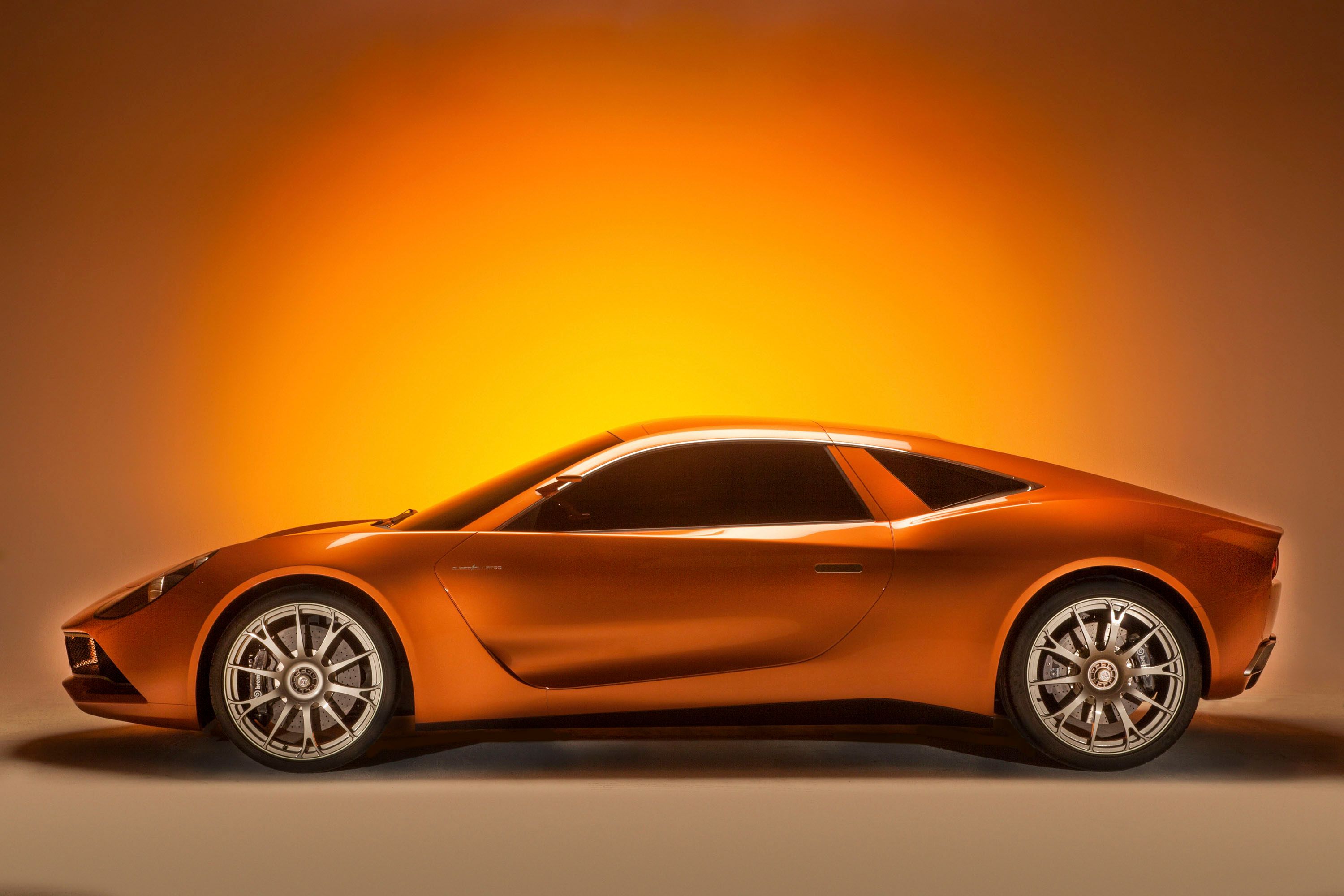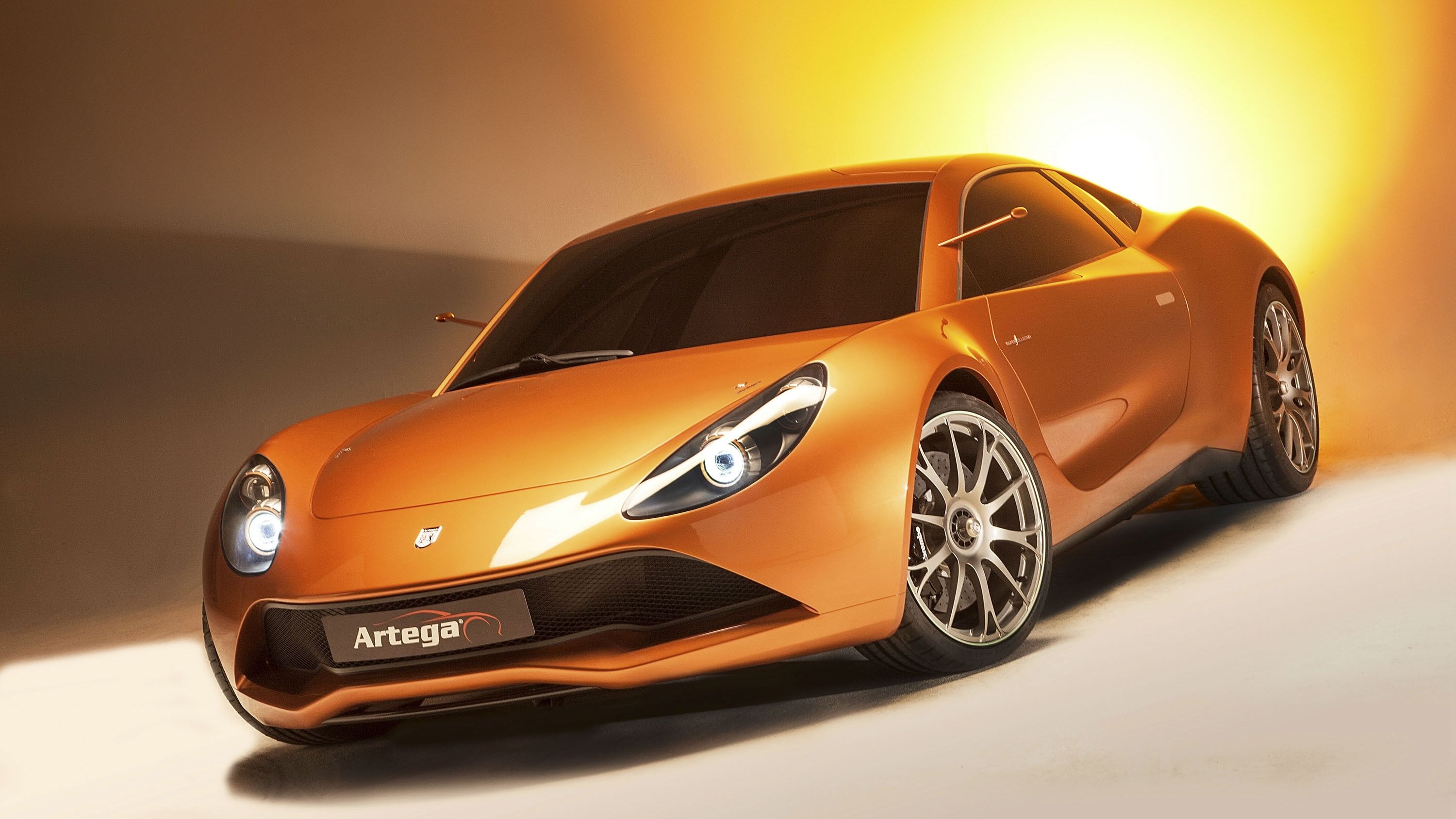Redemption stories are one of the coolest things about the auto industry. It’s especially sweeter when it happens to a small manufacturer who, by virtue of its size and resource, already has its back against the wall. We’ve seen some examples of these niche companies defying the odds, and a case can certainly be made that Artega did just that when it presented the Scalo Superelletra at the 2017 Geneva Motor Show back in March.
For those who aren’t familiar with Artega, don’t feel too bad because there’s a good chance that you’re not alone. The German automaker’s history dates back to only 2006 so it hasn’t been around long enough to have any mainstream cache. It certainly didn’t help the company’s cause when it filed for bankruptcy in 2012. To its credit, it didn’t give up on its goal to be a purveyor of German sports cars. So, after years of being on the sidelines, Artega returned to the automotive spotlight in Geneva with the Scalo Superelletra, a 1,020-horsepower electric supercar that’s itching to get a crack at the segment’s establishment. It may not have the pedigree of its would-be rivals, but give credit to Artega for preparing the Scalo Superelletra to potentially be a force to be reckoned with in the all-electric supercar market. Here’s to hoping then that the car lives long enough to realize its full potential.
Continue after the jump to read more about the Artega Scalo Superelletra
2018 Artega Scalo Superelletra
- Make: Array
- Model: 2018 Artega Scalo Superelletra
- Horsepower: 1020
- Torque: 1194
- [do not use] Vehicle Model: Array
What's In A Name?
Before we take the proverbial deep dive on the Artega Scalo Superelettra, it's important to know that Artega didn't just make up the "Superelettra" name. There's a reason behind the name that's tied into the make-up of the car. The word Superelettra itself is an amalgam of "Superleggera" – Italian for "super light" and "elettrica" – Italian for "electric."
Knowing the etymology of the car's name gives us a clearer picture of what it's about, and as far as being a super light electric car is concerned, the Scalo Superelettra does justice to the name it's been given.
Exterior
The first look at the Artega Scalo Superelletra reveals a sleek-looking car that embraces all the edgy and aggressive elements of a modern-day sports car with some mixed-in helpings of retro styling. This kind of design language was popularized in some ways by design house Touring Superleggera and, surprise, surprise, it’s no coincidence that the Scalo Superelletra looks this way because Touring Superelletra actually designed it. This also explains why the electric supercar looks different from the Scalo sports car that Artega previewed back in 2015.
Note: photo of the Argeta Scalo.
For one, the electric supercar is a lot longer in length, attributed partly to the use of a longer wheelbase to accommodate the electric powertrain that will eventually help the car achieve its intended power and performance goals. Then there’s the actual design of the car, which takes the form of a retro-styled fastback that draws comparisons to another previous work of Touring Superleggera, the Disco Volante. Remember that car’s raised rear section? The Scalo Superelletra also has it, although the latter does have a more refined look to it, thanks to how high those rear wheel arches rise.
Note: photo of the Touring Superleggera Disco Volante.
The front section of the car though is where the Scalo Superelletra elevates itself as a true performance machine. I’m prepared to ignore the similarities of the headlights to that of Porsche models because when taken as a whole, the front end of the Artega electric supercar has a unique look to itself. It doesn’t get the smaller Scalo’s bumper with those massive intakes on opposite ends of the grille. Instead, we get the full grille treatment on the Scalo Superelletra. I can’t say that it’s better or worse, but it is different, which is probably what Artega and Touring Superleggera were going for in the first place.
All things considered, this is a nice-looking car that shows plenty of promise, at least from a design perspective. At the very least, those who do end up owning one will be able to proudly say that they’re driving a niche German sports car that carries the styling heritage of one of the industry’s most esteemed design houses.
Interior
This section is really where the Artega Scalo Superelletra separates itself from other performance cars in the business today. There are no photos to speak of at the moment, but according to Artega, the Scalo Superlettera will not only make use of gullwing doors, but just as significant, it will carry a three-seat interior layout. This configuration is rarely used in the business today, and we might have to go back to the iconic McLaren F1 as the last non-concept mainstream supercar to come with a three-seat design.
Note: interior photo of the McLaren F1.
If the Scalo Superelletra does come with a three-seat interior layout, it would become a unique offering in a segment that has automakers looking for the smallest of edges over its rivals. It’s hard to tell if this kind of configuration will turn out to be a boon or a bane for Artega, but give credit to the German automaker for going out on the limb in trying to separate the Scalo Superelletra from the rest of the competition.
Other than the layout of the seats, much of the car’s interior is still unknown at this point. I can tell you though that if Artega really goes with this configuration, you can expect the electric supercar to feature a unique dashboard to go with. Likewise, premium materials are expected to be used generously. Say what you will about the Artega’s ambitions; it’s going to be important for the Scalo Superelletra to look the part of a car that’s expected to compete against the McLarens and Ferraris of the world.
More details about the car’s interior are expected to be revealed closer to its start of production, which has been set sometime in 2018. Let’s hope then that given its new goals, Artega has a clearer roadmap to get there.
Drivetrain
As good as the Scalo Superelettra looks, it’s success will largely revolve around its power, performance, and reliability. It’s one thing for a car to look the part of an electric supercar; it’s another thing entirely for it to act like one while not endangering the lives of the people driving it.
On the power and performance front, Artega’s solution in giving the Scalo Superelettra four figures worth of power is to install four electric motors, one on each axle of the car. Altogether, the four electric motors combine to produce a staggering output of 1,020 horsepower. No torque numbers have been announced at this point, but a report from Auto Express suggested that the electric supercar is capable of releasing as much as 1,194 pound-feet. Should that be the case, the Scalo Superelettra is tipped to accelerate from 0 to 62 mph in just 2.7 seconds, putting it in the vicinity of the Ferrari LaFerrari. Top speed is quoted at 186 mph.
Since this is an electric car, it’s important to also note that its lithium-ion batteries only require around 17 minutes to get back up to 80 percent capacity. On a full charge, the Scalo Superelettra is said to have a range of 500 kilometers, or about 311 miles. The car’s power and performance numbers are impressive, but then again, this is the electric supercar segment we’re talking about. Even if we take established automakers out of the question, there are fellow niche brands that are staking their claim on the segment themselves. If Artega really wants the Scalo Superelettra to really make a name for itself, it’s going to have to do compare favorably to two cars in its segment that have been in the headlines in recent months: the Nio EP9 and the Rimac Concept One.
Nio EP9
Let’s start with the Nio EP9, the same car that recently made headlines after posting a scintillating lap time of 7:05.12 around the Nürburgring, becoming the fastest ever electric car to navigate around the 12.9-mile race track. That achievement was set in no small part to what the EP9 was carrying with it: four high-performance electric motors that combine to produce a staggering 1,342 horsepower. In case the numbers start getting confusing at this level, the EP9 has more than 300 horsepower on the Scalo Superelettra. That’s a big deal in this segment and it also helps the EP9 accelerate from 0 to 62 mph in 2.7 seconds and from 0 to 124 mph in just 7.1 seconds. The car’s top speed has been pegged at 195 mph.
Rimac Concept One
If the EP9 itself already presents a daunting mountain to climb for the Scalo Superelettra, it’s going to find it even more difficult if it has to do it against the Rimac Concept One, the same electric supercar that Richard Hammond was driving when he crashed it and injured his knee in the process. That Concept One may have burned beyond recognition, but still, the car has 1,072 horsepower and 1,180 pound-feet of torque at its disposal. That’s good enough to help it sprint to 60 mph in just 2.6 seconds on its way to a top speed of 221 mph.
Both the Nio EP9 and the Rimac Concept One are just two of the many electric supercars that are slowly building this segment into one of the most competitive ones in the entire auto industry. Give props to Artega for taking on this challenge. If the Scalo Superelettra ends up being everything the automaker hopes it’s going to be, then we could be in for a raucous segment of high-powered electric machines that can lay waste to anything that gets in their way.
For a clearer picture on how the Scalo Superelettra compares to its would-be rivals, check out the table below.
|
Model |
Engine |
Horsepower |
Torque |
0 to 60 MPH |
Top Speed |
Range |
|
Artega Scalo Superelettra |
four electric motors on each axle |
1,020 horsepower |
1,194 pound-feet* |
2.7 seconds |
186 mph |
311 miles |
|
Nio EP9 |
four electric motors on each axle |
1,341 horsepower |
1,300 pound-feet* |
2.7 seconds |
195 mph |
265 miles |
|
Rimac Concept |
four electric motors on each axle |
1,072 horsepower |
1,180 pound-feet |
2.6 seconds |
221 mph |
300 miles |
Pricing
Here’s what we know about the Artega Scalo Superelettra's availability: the German automaker has not yet revealed how much the car is going to cost, although there have been rumors suggest a price around $1.5 million, give or take a few hundreds of thousands. We do know that Artega only plans to build 50 units of the car with production expected to start in late 2018 ahead of the planned launch in the spring of 2019. So it’s extremely limited and has a cost of around $1.5 million? Sounds like a car that has to be worth all the hype, right? Let’s hope then that Artega is more than ready to live up to it.
Competition
Mercedes SLS AMG Coupe Electric Drive
I know there’s temptation to see the Scalo Superelettra as a niche electric supercar and compare to similar models. Let’s not forget though that even mainstream automakers have begun dipping their toes in the segment. Take the Mercedes SLS AMG Coupe Electric Drive for example. When it was launched in 2013, the electrified version of the SLS AMG came with the same powertrain makeup as most electric cars today: four electric motors powering each wheel axle. It didn’t achieve the kind of power that cars like the EP9 and Concept have done, but it was still good enough to generate an output of 740 horsepower and 738 pound-feet of torque, good enough to propel the two-door to 60 mph in just 3.9 seconds before maxing out at an electronically limited top speed of 155 mph.
Read our full review on the Mercedes SLS AMG Coupe Electric Drive.
Audi R8 E-Tron
Mercedes was one of the first premium automakers to launch an electric performance car. It wouldn’t be the last though as rival Audi soon followed with the R8 E-Tron. The German automaker followed a different powertrain layout, opting instead to use a lithium-ion battery pack and two electric motors to power the electrified R8. The result is an output of 456 horsepower and 679 pound-feet of torque to the rear axle, enabling a run to 62 mph in 3.9 seconds and a top speed of 155 mph.
Read our full review on the Audi R8 E-Tron.
Tesla Model S
Any discussion of electric cars will have to include Tesla, and for what it’s worth, the pioneer of this segment has a car in the Model S that can line up against the best the market has to offer. The Model S has had many different iterations over the years, but today, it’s four electronic motors is capable of producing 588 horsepower and 920 pound-feet of torque out of the range-topping P100D model. It may fall short in power compared to its rivals, but that torque figure is simply a menace on its own, allowing the Model S to sprint from 0 to 60 mph in an unbelievable 2.3 seconds!
Read our full review on the Tesla Model S.
Conclusion
It’s easy to applaud Artega for building a car like the Scalo Superelettra and marveling at its expected power and performance capabilities. But like most niche automakers with problematic histories, it’s not that easy to expect something just because the company says it’s coming. That’s where I’m at with the Scalo Superelettra. It looks like a great car and it has the power and performance abilities to really make a name for itself. But until Artega can prove that it can build all 50 units it plans to build of the Scalo Superelettra, it would be foolish of me to take the company’s word for it.
Show us what you can do first, Artega. If you can build the car exactly the way you want it and it performs the way you expect it to, then we’ll give it – and you – some proper respect. Until then, though, we’re in a wait-and-see mode, as well we should.
References
Read our full review on the Artega Scalo.
Read our full review on the Artega GT.


